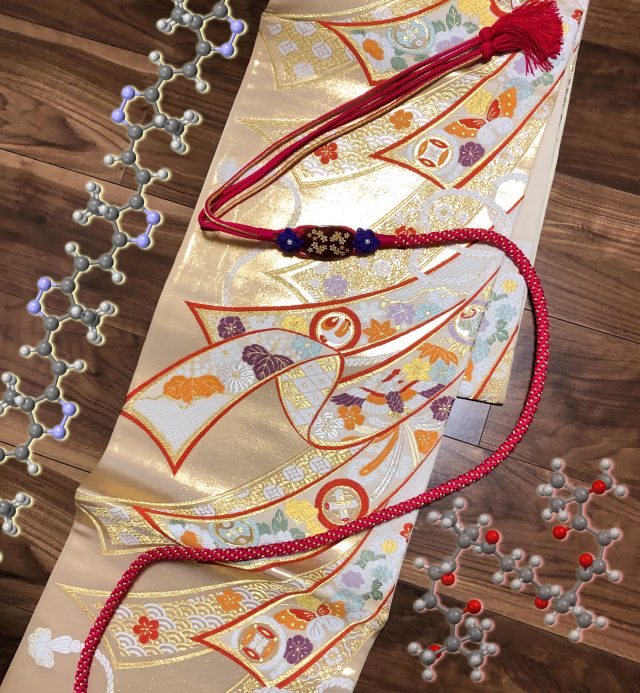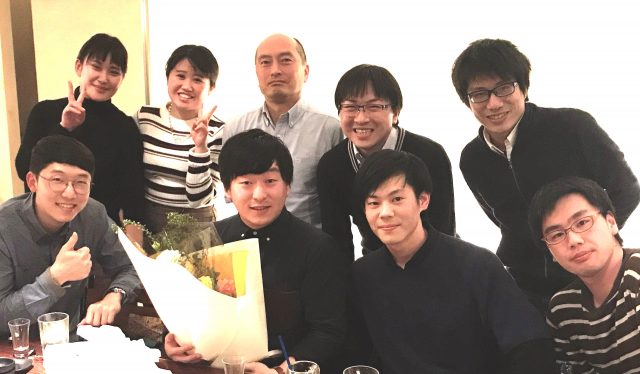Research Summary
ICReDD researchers developed a new polymer that allows more facile and efficient chemical modifications than similar polymers before. The polymer developed is classified to so-called ‘polyketones’. Due to their unusually good mechanical- and thermo-stabilities, polyketones are already used in many applications where moving parts meet or liquids need to be contained. Now, the researchers around our Principal Investigator Yasuhide Inokuma demonstrated a facile two-step transformation of a polyketone polymer that the research group originally designed and synthesized into colored and potentially conductive materials. Since the chemical transformation reactions proceed efficiently and do not require bothersome purification process, a wide range of applications are expected.
Background
Macro molecules such as polymers are often synthesized by connecting simple building blocks. Polyketones, well-known engineering plastic polymers, are synthesized using building blocks that have carbonyl (C=O) group(s). Their excellent mechanical and thermal stabilities make them attractive for usage in cars, in electronics, and in moving, mechanical parts. In addition, the polyketones’ carbonyl groups open them up to a multitude of chemical modifications during their synthesis, increasing their potential usefulness even further. However, these modifications are often not effective and produce undesired by-products. The resulting unclarity in chemical structure leads to a reduction in functionality of the material to be produced with the modified polyketones.
Recently, the group around Associate Professor Inokuma developed a polyketone that overcomes this difficulties and can be modified precisely and efficiently. In their most recent paper, they demonstrate highly chemo-, regio- and stereoselective chemical reactions of polyketones that give π-conjugated organic pigments. The π-conjugation is important to induce attractive properties such as color, conductivity and so on. Using the chemical transformation, the group achieved to introduce π-conjugation into the polyketone polymer. Detailed analysis confirmed the reliability of chemical transformations and that the obtained materials is not contaminated by by-products.
Outlook
It is this ease of handling that the synthetic chemists are most excited about. Associate Professor Inokuma himself compares his polyketone chains to “magic ropes” that can enable scientists and engineers to freely design new molecules because they are flexible, shapable, and capable of taking part in many chemical reactions. He explains: “Polymer scientists are very interested in the motif of our polyketone chains. We are now collaborating with other researchers inside and outside of ICReDD to further explore the potentials of our magic rope molecules.” He continues: “The motto of our research is: ‘Make it easier to understand.’ We want to make developing new reactions and materials easy and intuitive.”
Original article
Manabe Y., Uesaka M., Yoneda T., Inokuma Y.: Two-Step Transformation of Aliphatic Polyketones into π-Conjugated Polyimines. The Journal of Organic Chemistry, June 25, 2019. [https://doi.org/10.1021/acs.joc.9b01119]
Funding information
This work was supported by the Grant-in-Aid for Young Scientists (A) (No. 17H04872), and by the Asahi Glass Foundation. ICReDD was established by World Premier International Research Center Initiative (WPI), MEXT, Japan.
Contacts
Associate Professor Yasuhide Inokuma [https://www.eng.hokudai.ac.jp/labo/lor/HP/member/inokuma_e.html]
Institute for Chemical Reaction Design and Discovery (WPI-ICReDD)
Hokkaido University
Email: inokuma[at]eng.hokudai.ac.jp
This research article was chosen to be the cover picture.



